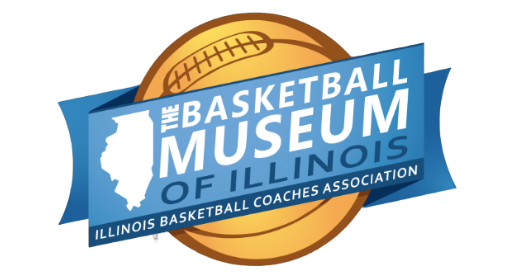Crim: Basketball Museum of Illinois inches closer to becoming reality with home found in Bedford Park

NORMAL, Ill. — Bruce Firchau was known as a “fixer” during his 38-year basketball coaching career, taking downtrodden programs and turning them into winners.
His 557 career victories, mostly at schools in northern Illinois, and 2007 induction into the Illinois Basketball Coaches Association Hall of Fame are testaments to the success he achieved.
His biggest victory, however, will be turning the dream of a museum to preserve and tell the stories of the long, rich history of basketball in Illinois into reality.
And he believes it is finally within his grasp.
Firchau announced during the annual IBCA Hall of Fame banquet April 30 on the campus of Illinois State University that the IBCA and the Basketball Museum of Illinois have entered a partnership with Wintrust Sports Complex and Village of Bedford Park to develop such a site.
Bedford Park sits on the southwest corner of the Chicago city limits, near Midway Airport and minutes from downtown.
The Wintrust Sports Complex is a gleaming $35 million facility that opened last fall. It features 100,000 square feet of indoor volleyball and basketball courts, conference rooms, a family entertainment center with laser tag, arcade games, esports lounge and bar and restaurant.
There were more than 140 volleyball teams playing in a tournament the first weekend it was open. An AAU basketball tournament the last weekend of April drew more than 5,000 visitors to the complex.
And, if all goes as planned, it will someday soon will be home to the Basketball Museum of Illinois.
“It brings everything to the table we wanted and then some,” said Firchau, chairman of the Basketball Museum of Illinois, a nonprofit organization. “We always wanted a place where we could be interactive, and event driven.”
Initiatives this year include the installation of a limited amount of memorabilia along the complex’s hallways, hosting coach and player clinics, development of Leadership Academy events, speaking engagements and the creation of a virtual Hall of Fame experience.
Two, 55-inch touchscreen monitors will be installed in high-traffic areas in the complex, enabling users to get a taste of Illinois’ basketball history.
“We can put up a lot of graphic arts displays to show that we are coming,” Firchau said. “We can give them some appetizers to visualize, see and read.”
Ultimately, should the complex follow through with plans to add 25,000 square feet of space, the Basketball Museum of Illinois will have an even larger presence at the site, the kind of physical home museum organizers have long envisioned.
The journey, which began more than a decade ago and has featured a series of starts and stops and disappointments, is not complete. The Basketball Museum of Illinois must still raise an estimated $3 million to $5 million over the next several years to operate and sustain a facility long term.
And fundraising has always been the primary stumbling block.
“We’re teachers and coaches and we’re very good at our craft,” Firchau said of members of his organization. “But that did not give us the skills necessary to get inside philanthropic circles. There were times when we would take a step forward and then a step or two backward.
“Now we have an ally to help us (Bedford Park) and a facility that is a real jewel (to sell to potential donors). It opens some real possibilities for us.”
Many potential standalone museum sites across the state have been considered since the quest began, including Centralia, Champaign and Quincy.
The most promising was Pontiac, which offered a portion of a vacant Kmart building in 2017. Organizers envisioned the facility to be more than artifacts, history and images. It also would have featured interactive displays, including a miniature hardwood court, and would have been used as an event center.
ESPN broadcaster Dick Vitale even visited the city to rally support. However, the building was in bad need of updating and repair to develop it into a museum. Two years later, the IBCA abandoned that pursuit.
“We really appreciated Pontiac and its efforts,” Firchau said. “We could not get the money raised. To take it and develop it into a museum, nobody wanted to fund construction costs. That’s boring.”
COVID-19 brought efforts to a screeching halt. Firchau said his group used that time to conduct internal studies to reassess its objections and study what was happening to other museums in the wake of the pandemic, many of which have since fallen to the wayside.
The group concluded a standalone museum was no longer feasible. It had to be a destination for more than history, which the Wintrust Sports Complex provides.
Moreover, while exhibits displaying photos, uniforms, basketballs, trophies, old scoreboards and popcorn machines, film archives and the like would appeal to many, there also needed to be a greater interactive element to entice younger people.
Accomplishing that meant finding a partner in a high-traffic area, acquiring help to build and market a virtual site, and getting assistance in fundraising.
Enter the Wintrust Sports Complex and Bedford Park.

“We knew they were building a huge sports complex, but that’s about all we knew,” Firchau said. “We first met with them in late fall when they were getting ready to open and probably met five or six times overall. Their architect met with our museum designer.
“With all the youth coming through (the complex), we saw it as a real possibility. And it would be a two-way street. We could help them bring more people to the complex.”
The Basketball Museum of Illinois already has recorded 70 oral histories, including several with ties to Quincy basketball. It has artifacts it can eventually rotate and display. The goal is to highlight the basketball history of every county in the state, from junior high to the pros, boys and girls, men and women.
“What we have in terms of displays is the tip of the iceberg,” Firchau said. “We will have an avalanche of memorabilia once we have a physical site. You’re talking about 120 years of history.”
For now, the Basketball Museum of Illinois appears closer to becoming a reality than perhaps it ever has. Work remains — hard work in fact — but for the first time in a long time Firchau believes he can see the finish line.
“We have traveled all over trying to promote the idea of wanting a museum,” Firchau said. “Our tradition is too rich not to have one. Those who have stayed with us, our more than 1,500 grassroots donors, have shown faith in us. They helped keep this thing alive.
“For me, personally, it’s like a gorilla has been lifted off my shoulders. The journey has stretched out years and years. I really felt like I was letting the state down by not getting the project done.
“I was very successful as a coach, but sometimes you have to learn from your failures. You have to or you won’t be successful in the long run. We’ve learned from our failures. We want to show people we are for real.”
Miss Clipping Out Stories to Save for Later?
Click the Purchase Story button below to order a print of this story. We will print it for you on matte photo paper to keep forever.
